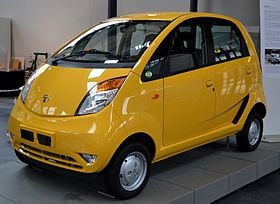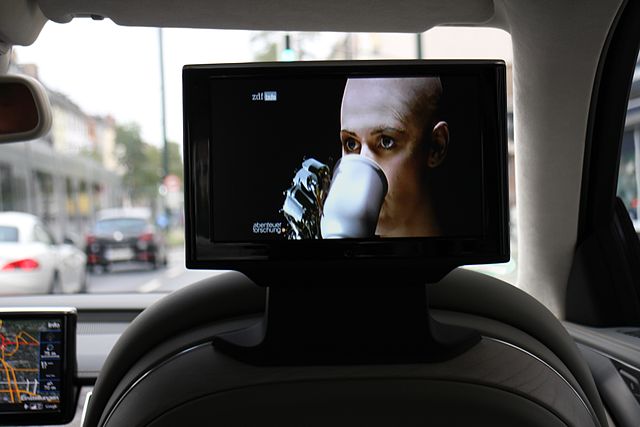New car tech not a winner with every driver
Up till today, the trend among automakers has been bigger and better whistles in each new car model. The assumption is that drivers are used to...

Car buying public, we’d like to introduce you to the Tata Nano. Never met before? That’s okay - allow us to make some introductions. The Nano was introduced in India in 2008 by Tata Motors, an arm of the multi-national Tata conglomerate that owns such diverse holdings as Eight O’Clock Coffee and Tetley Tea. To much fanfare, it was marketed as the no-frills solution that was going to make car ownership accessible to hundreds of millions of Indians who, up till now, could only afford cheap two-wheel scooters. How much would it cost to buy a brand-new Tata Nano?
$1,600.
 Holy bank accounts, Batman. $1600 (100,000 rupees) for a new car? Granted, the price did go up in the proceeding years, but even now, it only costs $2400 to buy.
Holy bank accounts, Batman. $1600 (100,000 rupees) for a new car? Granted, the price did go up in the proceeding years, but even now, it only costs $2400 to buy.
And yet, the Indian consumer market responded with a great big *yawn*.
That’s a really strange reaction for a country filled with hundreds of millions of middle and lower-class potential car buyers who don’t have the money to buy BMWs and Mercedes. You would think the value proposition of the Nano would have fit right in.
And yet, it did not. Sales did not take off as expected (despite huge notoriety and fanfare). They ended up having to close down a factory as demand did not support production capacity. One factory could produce about 250,000 cars a year, yet sales topped out at a high of 74,000 cars in 2011-12 and was down to only 10,000 units in the first half of the 2013-14 fiscal year.
So why would consumers, who don’t have money to burn, be unwilling to buy super-cheap cars?
Turns out, sales of the Nano were held hostage to human nature. Auto industry analysts for India figured out a few important factors that have hamstrung Nano sales since its inception and prevented it from lighting the Indian car market on fire.
You can’t build and sell a viable car for $1600-$2400 without cutting a few corners. Ok, a lot of corners. The Nano didn’t offer power steering or power windows. You had to access the trunk from inside the car (the back hatch wouldn’t open), and you gassed the car up by popping the hood (no outside gas cap). They even cut costs by only using three lug nuts on the wheels instead of the normal four.
If you’re going to pay less than $2500 for a new car, you’re not expecting it to be a Rolls Royce. But too many people looked at the extreme no-frills-ness of the Nano and had second thoughts about it. Especially when...
Which is the popular two-wheel scooter that so many Indians rely on. Scooters cost hundreds, not thousands. So if an Indian buyer was going to plunk down a thousand more to get an actual car, turns out they decided they didn’t want the cheapest thing available.
And this makes sense. Marketing experts have known for years that people don’t always want the least expensive choice. In fact, many times they will run away from the cheapest option, choosing the middle price choice instead of the lowest price. Human psychology plays into this – consumers don’t always trust the cheapest choice, if only because people assume that you get what you pay for (implying that the least expensive option is the lowest quality or the worst one).
Almost immediately, the Nano was hurt by ill-timed publicity linking it to vehicle fires. The company went to great lengths to deny those were related to the car’s design, and instead blamed bad foreign electrical parts. They even offered to fix the problem by extending the car’s warranty from 18 months to four years. Was that the right approach? Possibly not, because it didn’t change what the public thought about the car – too many people had doubts about its safety, whether those doubts were justified or not. A simple warranty extension did nothing to dispel the nagging doubts.
A final big reason why millions of people didn’t buy the Nano was that they would rather spend more to buy a cooler used car than spend less to buy a new Nano. It’s about perception – a used Honda or BMW costs more, but has more “social cachet”. Riding around in a Nano marked its owners as someone who was cheap.
Sometimes, cheaper is not always better. Or at least it’s not perceived to be. The experience of Indian consumers with the Nano confirms this. Hopefully, Tata will do whatever they need to do to right their ship. Millions of people await the results.
You may be interested in these other posts:

Up till today, the trend among automakers has been bigger and better whistles in each new car model. The assumption is that drivers are used to...

When the cold months arrive, your car performance seems to go on vacation. Starting is harder, performance is sluggish, and drivability is more...

Hollywood does love a good underdog story. Make it a racing story and Hollywood loves it even more. Those of us old enough to remember, first-hand,...